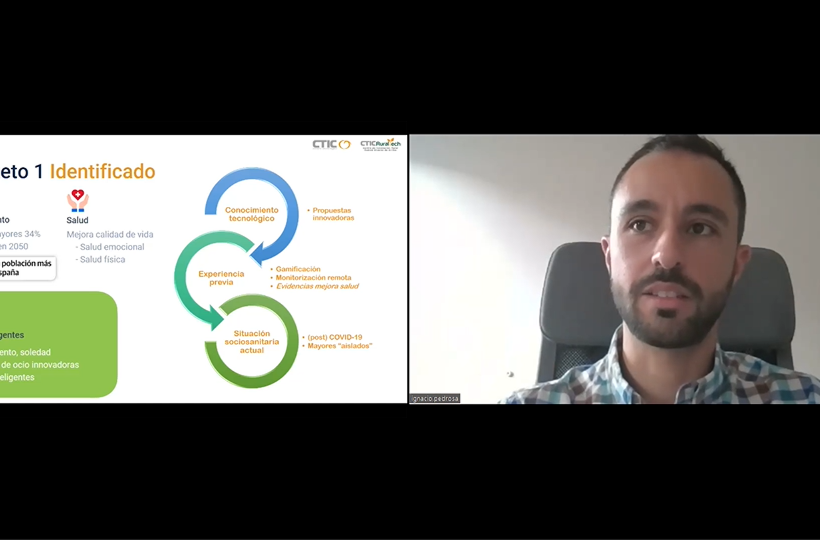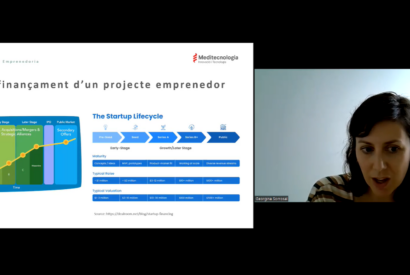Human-centred innovation to address mental health challenges
How to address mental health problems, such as suicide or unwanted loneliness? Learn about technological solutions co-designed with users in rural contexts.

The co-design of technological solutions with people on the ground is crucial to understand their real needs and facilitating the improvement in their quality of life and well-being. Based on two innovative projects in mental health, Ignacio Pedrosa from the CTIC Technology Centre pointed out the importance of developing innovation in parallel and together with people.
Thus, the human factor has become the central topic of the XVIII Breakfast&Learn, where Pedrosa has assured that “technological progress does not necessarily imply social progress if it does not focus on people”, and he has exemplified it through two cases applied in the rural area, specifically, in Asturias.
Technology, a support element for professionals
Another of the aspects addressed was the complementarity of technology with the practice of healthcare professionals, which in no case should replace them. In this sense, Pedrosa presented the BOSCO project, one of the success stories, which consists of a digital clinical decision support tool. It facilitates access to patient’s clinical data from a single place, speeding up the subsequent diagnostic process.
By standardising all these data, the solution allows early identification of risk factors in people with suicide or self-harming tendencies in primary care. This technology facilitates early diagnosis and risk monitoring by the professional, but in no case establishes the treatment to be followed.
The rural component had a significant impact, as the technology was implemented in a rural district of Asturias characterised by depopulation, few job opportunities and difficulties in revitalising the area, all of which are catalysts for suicidal behaviour.
So, despite the availability of technologies, such as artificial intelligence and machine learning, that allow us to create predictive models, the clinical opinion of the professional has the last decision.
Smart, non-invasive solutions
In addition to identifying and responding to people’s needs on the ground, technology must overcome any perception of intrusiveness for users.
According to Pedrosa, there is no doubt that “technology is an innovative and motivating element for health promotion”, but it is important to ensure that it is not an intrusive element and that it does not alter people’s daily lives, but that it is an additional tool to work on their health.
This idea was exemplified by the second success story presented by the expert. This is an intelligent device for monitoring the physical activity of the residents of Tineo (Asturias), the result of which was not only a reinforcement and improvement of physical health but above all the promotion of the social cohesion of these people, thus addressing a latent problem in the villages: unperceived loneliness.
On this point, the speaker once again stressed the importance of co-designing these technologies with the users to improve their performance and to better adapt them to the real needs of each territory. Likewise, the inclusion of ethical aspects can help to increase confidence in the use of these solutions.
Challenges to the implementation of new technologies
During the session, some of the difficulties and constraints in applying and introducing technological solutions in practice, both in rural and urban areas, were also discussed.
The interoperability of data was mentioned as a major obstacle when working with clinical data from the public health system, which makes it difficult to integrate the same solution in different hospitals. In this sense, Pedrosa advocated the need to standardise the use of digital solutions.
Also, in line with the importance of artificial intelligence and new technologies meeting ethical and transparency requirements, the difficulties of access to ethical committees in the field of health have been pointed out.
Did you miss the session or do you want to watch it again? Click here to find out more.

